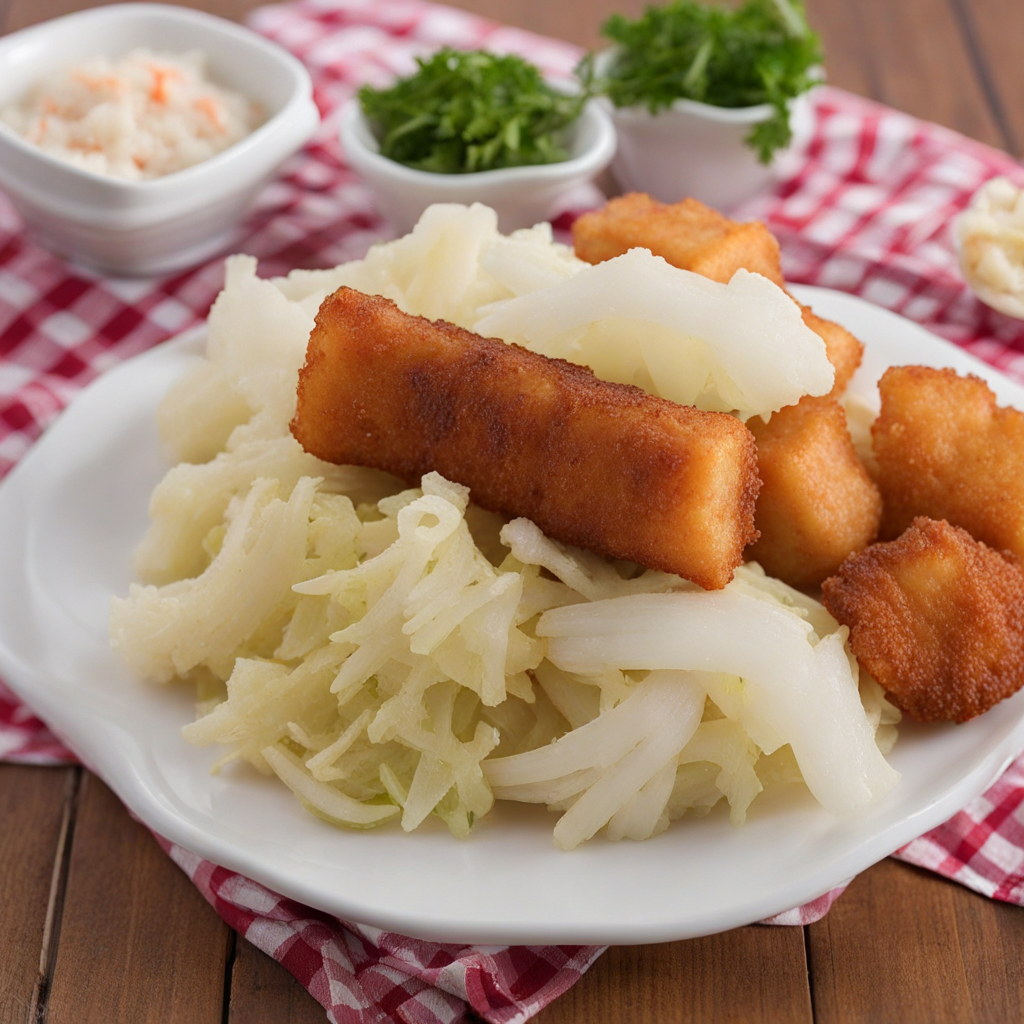Chorizo con Huevos
Chorizo con Huevos is a flavorful and hearty dish from Honduras that beautifully combines the rich, spicy notes of chorizo sausage with the comforting familiarity of scrambled eggs. The chorizo, typically made from pork, is seasoned with a blend of spices that may include paprika, garlic, and cumin, giving it a vibrant red color and a mouthwatering aroma. When cooked, the sausage releases its oils, which infuse the eggs with a savory depth, creating a dish that is both satisfying and aromatic. The combination of textures—the crispy edges of the chorizo and the soft, fluffy eggs—makes for a delightful culinary experience that engages the palate on multiple levels. Often served with warm tortillas, Chorizo con Huevos can be enjoyed for breakfast, lunch, or even dinner, making it a versatile option in Honduran cuisine. The dish can be garnished with fresh cilantro, diced tomatoes, or avocado slices to enhance its flavor profile and add a splash of color. The tortillas act as a perfect vessel for scooping up the delicious mixture, allowing you to savor every bite and creating a communal eating experience that’s cherished in many households. This dish not only showcases the bold flavors characteristic of Honduran cooking but also reflects the cultural significance of sharing meals as a way to connect with family and friends. Whether you’re enjoying it at a local eatery or preparing it at home, Chorizo con Huevos is sure to awaken your taste buds and inspire a newfound appreciation for the vibrant culinary traditions of Honduras.
How It Became This Dish
The Rich History of Chorizo con Huevos in Honduras Honduran cuisine is a vibrant tapestry woven from indigenous traditions, Spanish colonization, and Afro-Caribbean influences. Among the many dishes that grace the tables of this Central American nation, Chorizo con Huevos stands out as a beloved breakfast staple that embodies the cultural confluence of flavors and culinary practices. This dish, simple yet hearty, has deep roots in the country’s history and continues to evolve, reflecting both local ingredients and social trends. #### Origins: Roots in Spanish Colonialism The origins of Chorizo con Huevos can be traced back to the influence of Spanish colonization in the 16th century. As the Spanish settlers established their presence in Central America, they brought with them a variety of culinary traditions, including the art of sausage-making. Chorizo, a type of pork sausage seasoned with paprika, garlic, and other spices, became a cornerstone of Spanish cuisine. In Spain, chorizo is often enjoyed in many forms, from tapas to stews, and it quickly adapted to local tastes in the New World. In Honduras, the indigenous peoples—primarily the Lenca and Maya—had their own rich traditions of cooking with local ingredients like corn, beans, and a variety of meats. The introduction of chorizo added a new dimension to these meals, allowing for the blending of flavors that would define Honduran cuisine. The combination of chorizo and eggs was particularly appealing; eggs were a readily available ingredient, and when paired with the robust flavors of chorizo, they created a satisfying breakfast that could sustain laborers throughout the day. #### Cultural Significance: A Symbol of Togetherness Chorizo con Huevos is more than just a breakfast dish; it carries significant cultural weight in Honduras. It is a meal often shared during family gatherings, celebrations, and special occasions. In a country where communal eating is a cherished tradition, this dish is emblematic of the spirit of togetherness. Families often gather around the breakfast table to enjoy Chorizo con Huevos, accompanied by fresh tortillas, avocado, and a side of beans. Moreover, it is a popular dish in the street food culture of Honduras. Vendors often serve it in the morning, catering to those looking for a quick, hearty meal before starting their day. This accessibility has made Chorizo con Huevos a beloved dish for all social classes, transcending economic barriers and reinforcing its role as a unifying food in a diverse society. #### Development Over Time: Regional Variations and Adaptations As Honduras has evolved, so too has the preparation and presentation of Chorizo con Huevos. While the foundational elements remain the same—chorizo, eggs, and accompanying sides—the dish has embraced regional variations that reflect local preferences and available ingredients. One notable adaptation is the incorporation of local herbs and spices. In some regions, cilantro or green onions are added to enhance the flavor profile, while others may include hot peppers for a spicy kick. Additionally, the preparation method has diversified; while traditional versions feature the chorizo sautéed with eggs, modern interpretations may see the dish baked or served in a tortilla wrap, adapting to contemporary dining habits. The culinary landscape in Honduras has also been influenced by globalization. As more Hondurans migrate to the United States and other countries, they carry their culinary traditions with them, leading to the emergence of fusion dishes. In American cities with large Honduran communities, Chorizo con Huevos can be found in food trucks and restaurants, often served alongside elements of Tex-Mex cuisine, such as cheese and jalapeños. #### The Role of Chorizo con Huevos in Contemporary Honduran Life In today’s fast-paced world, Chorizo con Huevos remains a cherished meal that connects generations. For many Hondurans, it is a nostalgic reminder of home and family, often served on weekends when families come together to relax and enjoy a hearty meal. The dish is also celebrated in Honduran culture through various festivities and national holidays, where traditional foods take center stage. In recent years, there has been a growing movement towards the use of locally sourced and organic ingredients in Honduran cuisine. Many chefs and home cooks are now seeking to use artisanal chorizo made from heritage breeds of pigs, which not only supports local farmers but also enhances the flavor and quality of the dish. This trend reflects a broader global interest in sustainable eating practices and the preservation of culinary heritage. #### Economic Impact: From Local Markets to International Recognition The popularity of Chorizo con Huevos has also had economic implications. As awareness of Honduran cuisine grows internationally, there is potential for increased tourism and culinary interest in the country. Food festivals and culinary tours that highlight traditional dishes like Chorizo con Huevos can attract visitors eager to experience authentic Honduran flavors. These initiatives not only promote the dish but also support local economies and small-scale farmers. Furthermore, the rise of social media has allowed Honduran chefs and home cooks to showcase their culinary creations to a global audience. Platforms like Instagram and TikTok have become spaces for sharing recipes and cooking techniques, leading to a resurgence of interest in traditional dishes. Chorizo con Huevos has found its way into the homes of food enthusiasts around the world, further solidifying its status as a symbol of Honduran culinary culture. #### Conclusion: A Dish that Unites As we explore the history of Chorizo con Huevos, it becomes clear that this dish is much more than a simple combination of chorizo and eggs. It represents the rich tapestry of Honduran history, culture, and community. From its Spanish origins to its contemporary adaptations, Chorizo con Huevos has evolved while remaining a beloved part of daily life in Honduras. In a world that increasingly values the stories behind the food we eat, Chorizo con Huevos stands as a testament to the power of culinary traditions in fostering connection, identity, and cultural pride. Whether enjoyed at a bustling street stall in Tegucigalpa or recreated in kitchens around the globe, this dish continues to nourish not just the body, but also the spirit of togetherness that is so vital to the Honduran way of life.
You may like
Discover local flavors from Honduras







